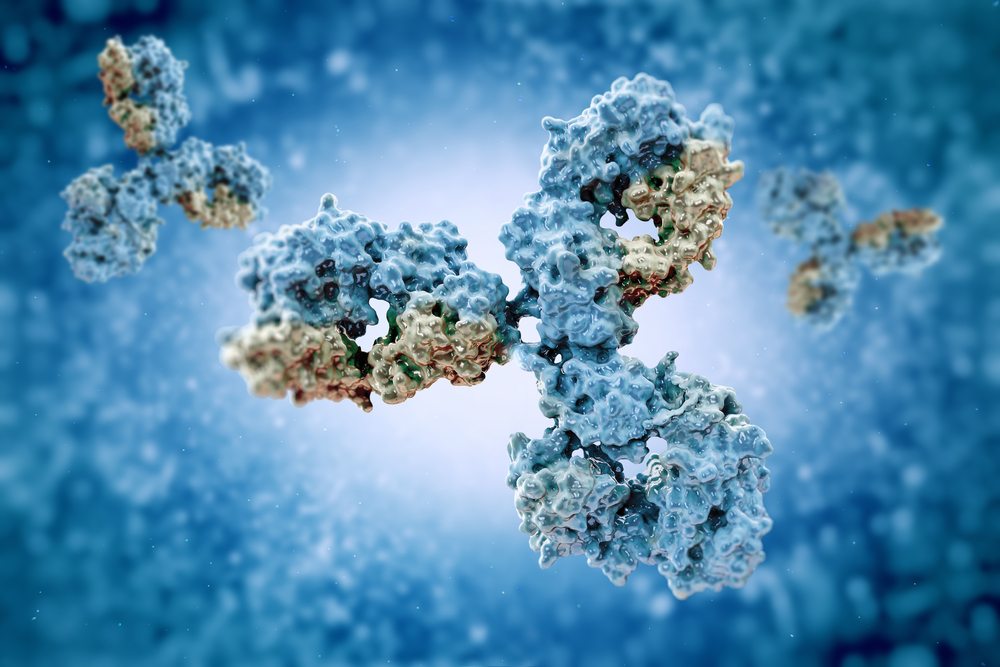AFFiRiS’ New Antibody May Help Halt HD Progression, Early Data Suggests

AFFiRiS’ C6-17, a candidate monoclonal antibody for the treatment of Huntington’s disease, is able to target and halt the spread of mutant huntingtin protein — the underlying cause of the neurodegenerative disorder — across cells, new preclinical data show.
The study, “Inhibiting cellular uptake of mutant huntingtin using a monoclonal antibody: Implications for the treatment of Huntington’s disease,” was published in the journal Neurobiology of Disease.
Huntington’s is a genetic neurodegenerative condition characterized by impairments in cognition and motor function loss. Patients show extensive atrophy, or shrinkage, of the striatum, a brain region involved in voluntary movement control.
The root of cause of Huntington’s is a CAG repeat, or a repeating set of nucleotides — the basic structural unit and building block for DNA — in the huntingtin or HTT gene. This CAG repeat results in the production and toxic accumulation of mutant huntingtin (mHTT) protein.
More recently, researchers have discovered that mHTT is able to propagate between cells, amplifying the disease across tissues. Blocking the spread of mHTT using immunotherapy has the potential to neutralize this toxic effect.
The monoclonal antibody (mAB) C6-17, being developed by AFFiRiS, was designed to bind with higher strength (affinity) to an exposed region of the mHTT protein, known as the caspase-6 cleavage region (C6).
Now, AFFiRiS researchers tested the efficacy of C6-17 to bind to its target, as well as its capacity to deplete mHTT.
Using cellular cultures in the lab, the team observed that C6-17 was able to bind to the correct protein fragment. Moreover, its binding ability was independent of the number of repeats present in the mutant protein. Compared with a second antibody called PRR13, also developed by AFFiRiS, C6-17 had a stronger binding affinity. As such, C6-17 seems to hold greater potential to be developed as a therapy.
When a human cell line was treated with C6-17, at a dose of 1 microgram per milliliter (ug/ml), the cells’ ability to secrete mHTT into cell media was significantly reduced, the researchers found.
mHTT uptake by the recipient cells also was almost entirely blocked. In addition, intracellular mHTT aggregates, or clumps, were significantly reduced — on average by 30-fold — in the presence of the antibody.
The researchers also tested whether C6-17 would be able to detect mHTT in post-mortem human brain tissue samples. C6-17 was able to label compact aggregates of mHTT, demonstrating its capacity to correctly detect its target in human tissue, they found.
“Previous reports indicate that the ability of peripheral antibodies to enter the brain is limited,” Noel Barrett, PhD, AFFiRiS’s CEO, said in a press release.
“However, considering that the peripheral nervous system can impact the central nervous system, our antibody may have the capacity to exert some beneficial effect on the brain as well, by influencing mutHTT levels in the periphery,” Barrett said.
“Our findings demonstrate that mAB C6-17 not only successfully engages with its target, mutHTT, but also inhibits cell uptake,” said Günther Staffler, PhD, chief technology officer at AFFiRiS.
“This suggests that the antibody could interfere with the pathological [disease] processes of mutHTT spreading in vivo,” he said. “These results validate our HTT/mutHTT targeting monoclonal antibody that could ultimately be used as passive immunotherapy to treat features of Huntington’s disease.”
AFFiRiS’ promising immunotherapy also could be combined with other strategies, the company said. One possibility includes gene silencing using either antisense oligonucleotides (ASOs) or microRNAs, a type of short RNA molecules capable of regulating the activity of multiple genes simultaneously. Such a dual strategy would target the mHTT protein itself and lower the activity of the HTT gene.
“Antibody-based interventions have been demonstrated to be safe and straightforward in application and handling,” Barrett said. “As such we foresee that antibodies, such as our lead antibody C6-17, could pioneer a new therapeutic strategy for reducing extracellular mutHTT, giving hope to patients [with] this extremely serious and difficult to treat disease.”






